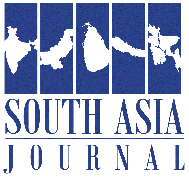
SAQLAIN RIZVE
Around 3:30 in the afternoon, just 25 kilometres from Lahore, a restless crowd gathers at the Wagah–Attari border, where two rival nations – India and Pakistan – meet. Pakistanis pass through layers of security, walking a dusty road for ten minutes to reach the venue.
Every day, a spectacle unfolds here as onlookers fill two grandstands at either end of a short stretch of asphalt, separated by a barbed-wire border and two imposing gates – locked except during the ceremony. As the sun sets, golden light spills over the Indian gallery, where a towering image of Mahatma Gandhi watches over thousands swaying to Hindi and Punjabi songs, chanting patriotic slogans. The Pakistani side, under construction, holds a smaller but equally fervent crowd.
At 4:30, the ceremony begins. Pakistani Rangers in stark black uniforms and Indian Border Security Force in crisp khaki march forward, each step a statement of power. Female soldiers lead the charge, their boots striking the asphalt like drumbeats of defiance. Every stomp, every raised leg, every piercing gaze is a challenge – an attempt to outshine, outstep, and outposture the other.
The galleries erupt into a war of voices. “Pakistan Zindabad!” (long live Pakistan) clashes with “Bharat Mata ki Jai!” (victory for Mother India) – a contest that never declares a winner. Occasionally, a brief silence falls. But to quiet down would mean conceding, and the crowd won’t allow that. On the Pakistani side, a man in traditional attire acts as the conductor, signaling the crowd to keep the energy high. The audience obeys. On the Indian side, the scene is mirrored, a frenzy of raised fists and unrelenting voices. The charged atmosphere feels like a battle without weapons, fueled by raw nationalism.
After twenty minutes, the storm settles. Soldiers meet at the gates, locking eyes before a formal handshake. Flags are lowered in synchronised precision, and just like that, the frenzy fades. The border returns to its uneasy stillness – until the next performance.
The ceremony’s origins lie in the Partition of British India in 1947, which created India and Pakistan as separate nations.
The Wagah–Attari Border Ceremony has been held every afternoon since 1959 at the Wagah–Attari border, just outside Amritsar, India, and Lahore, Pakistan. It began as a simple military routine for lowering national flags, but soon became a theatrical event. Over the years, it has evolved into a vibrant, daily display of patriotism that subtly reinforces the enmity between the two countries.
The ceremony’s origins lie in the Partition of British India in 1947, which created India and Pakistan as separate nations. The violent upheaval and hostility that followed led to decades of conflict, including the wars of 1948, 1965 and 1999, which resulted in thousands of deaths and ongoing tensions over the region of Kashmir. A deep-seated animosity between the two nations remains, evident in the statements of politicians and ordinary citizens. The ceremony, meant to symbolise sovereignty and military strength, has become a reminder of the bitter divide between them.
Though it might seem like entertainment and a gesture of collaboration and friendship, the ceremony subtly promotes a version of extreme nationalism rooted in aggression and rivalry. It’s not just a military ritual but a space where the adversarial relationship between India and Pakistan is re-enacted and celebrated. The performance reinforces the idea that national pride is linked to military strength and the ability to dominate the other nation.
This form of nationalism is effectively spread through spectacle and emotion rather than direct propaganda. The ceremony is accessible to people of all ages and offers a patriotic celebration that’s emotionally charged. The soldiers’ postures and movements symbolise not only discipline but the ongoing political and emotional divide between India and Pakistan.
This type of “banal nationalism”, as social scientist Michael Billig describes it, encompasses the everyday ways in which national identity is reinforced through rituals and symbols. The emotionally charged and intense spectacle of the Wagah–Attari Border Ceremony is an example of this. Spectators don’t leave with critical thoughts about history; instead, they carry with them a heightened sense of national superiority and a deepening sense of rivalry.
While the Wagah–Attari Border Ceremony is a colourful and energetic display of national spirit, it also functions as a powerful tool for promoting extreme nationalism. By transforming patriotism into a performance of aggression and rivalry, the ceremony ensures that the division between India and Pakistan remains alive in the public consciousness, shaping perceptions of each other for generations to come.
The article appeared in the lowyinstitute
